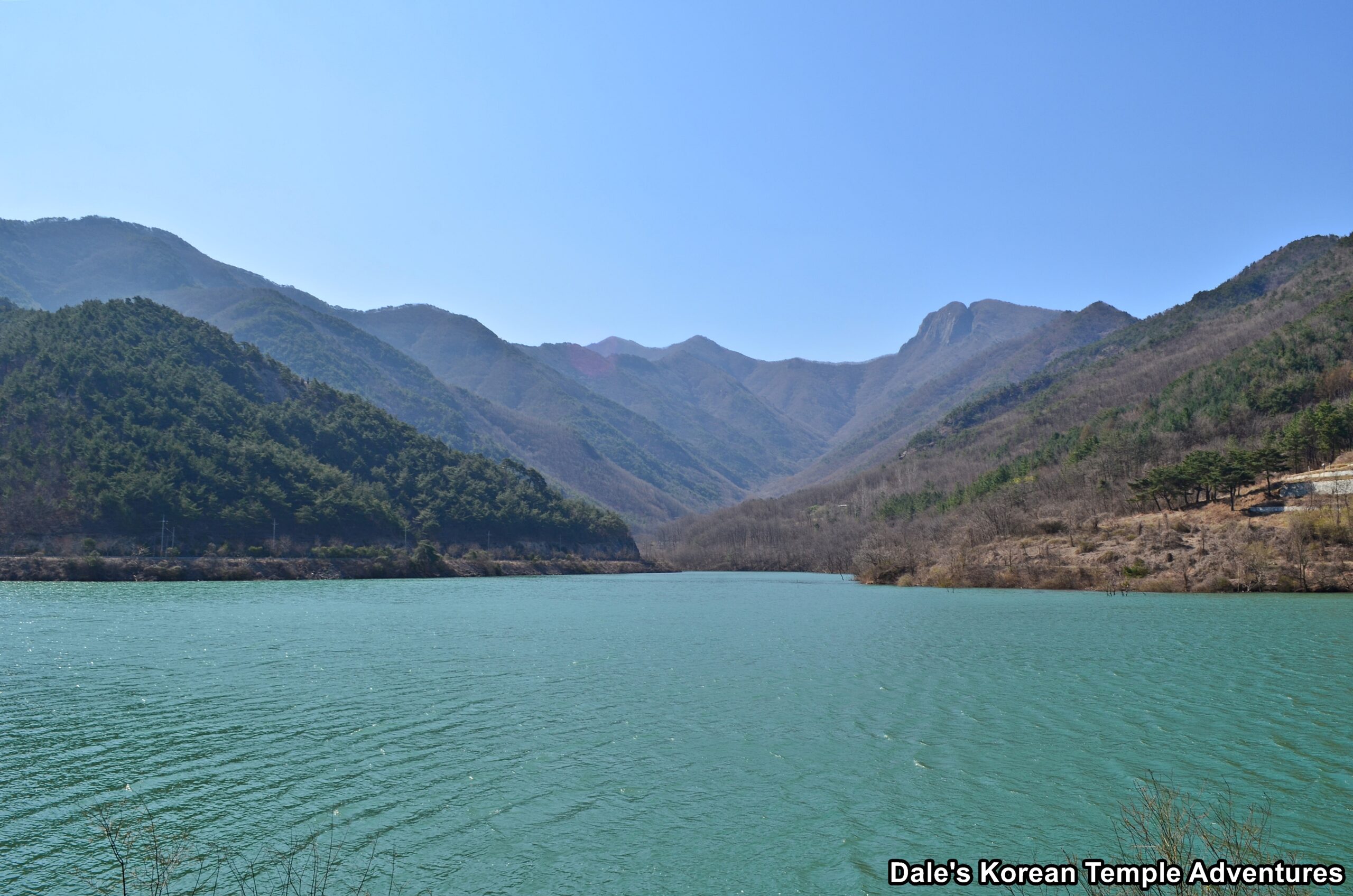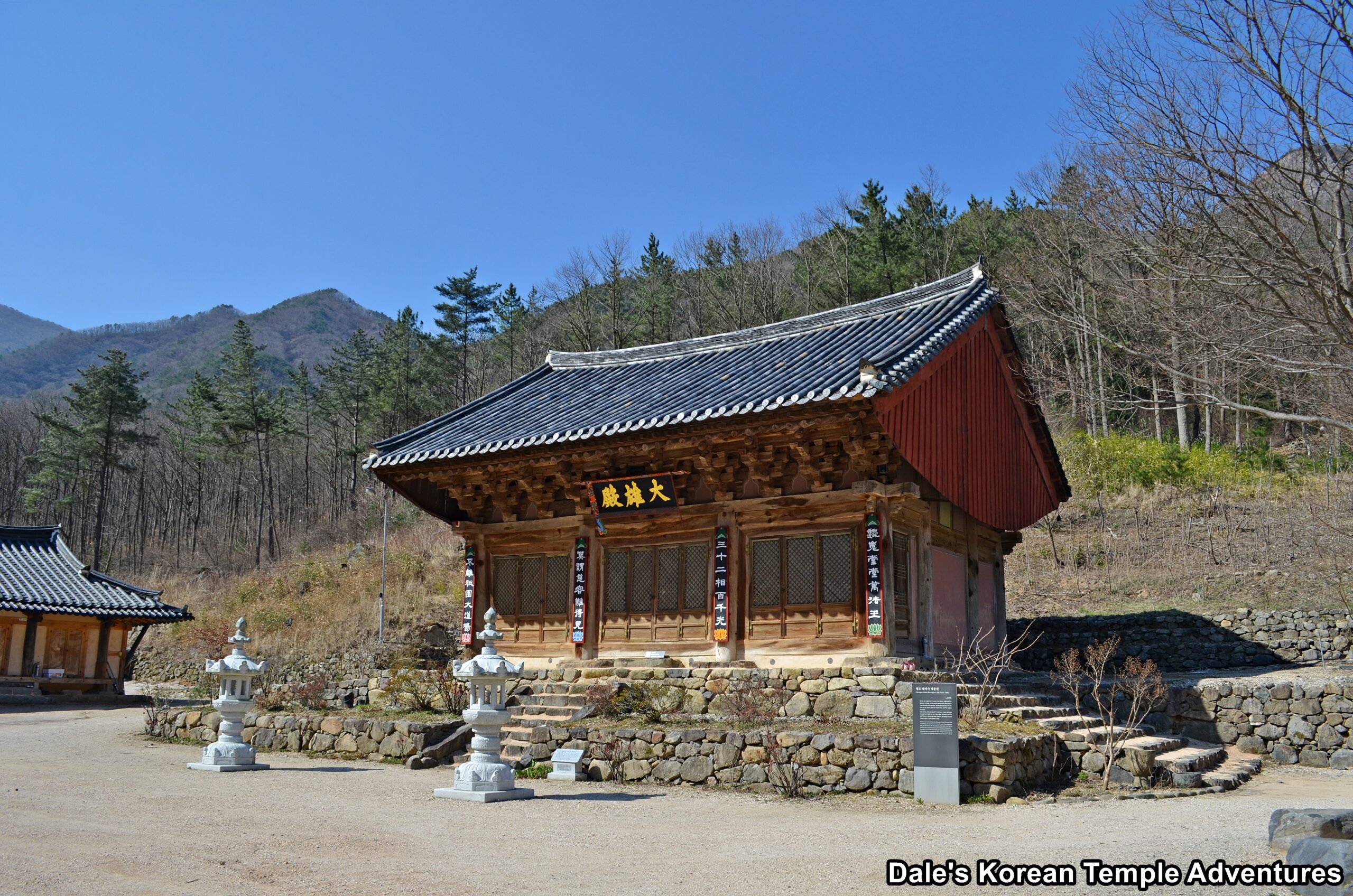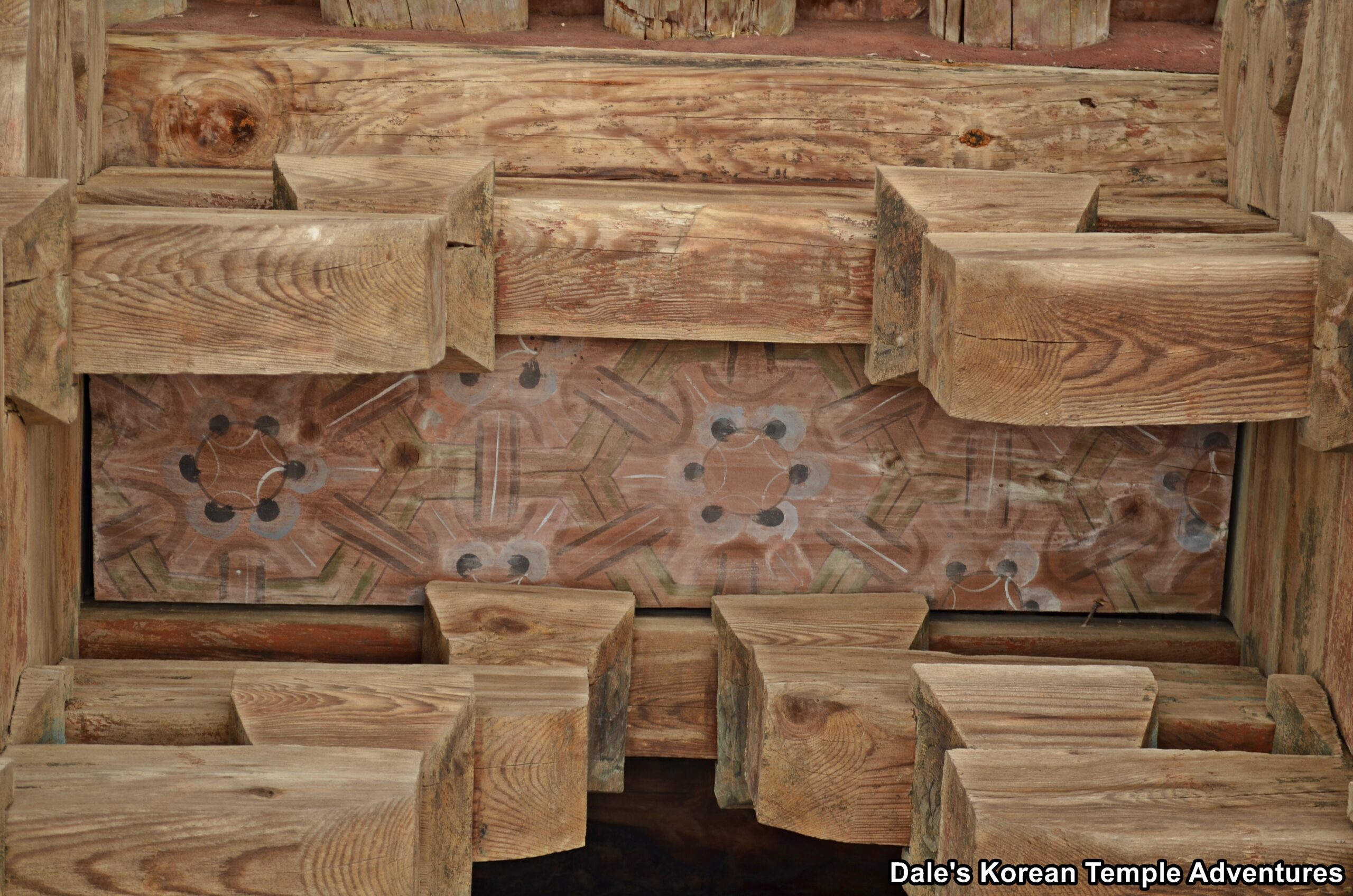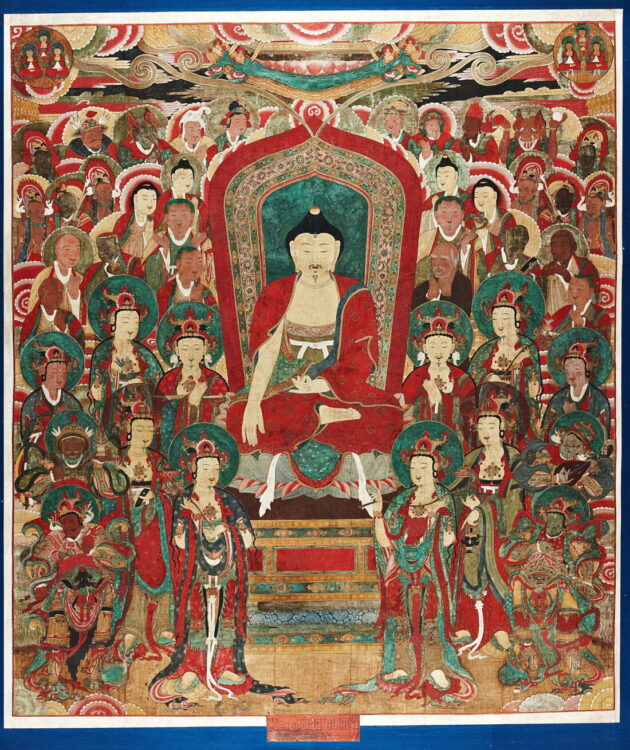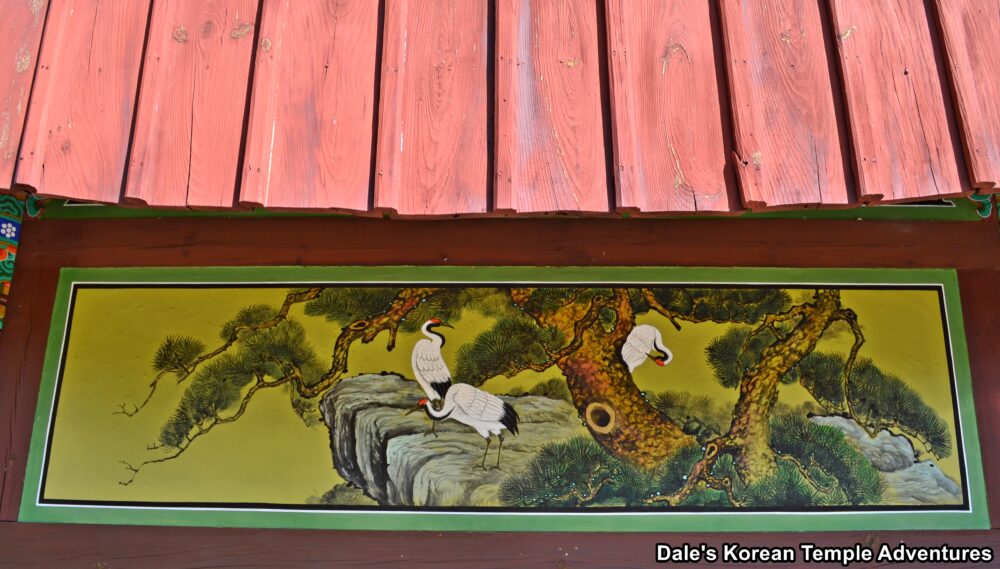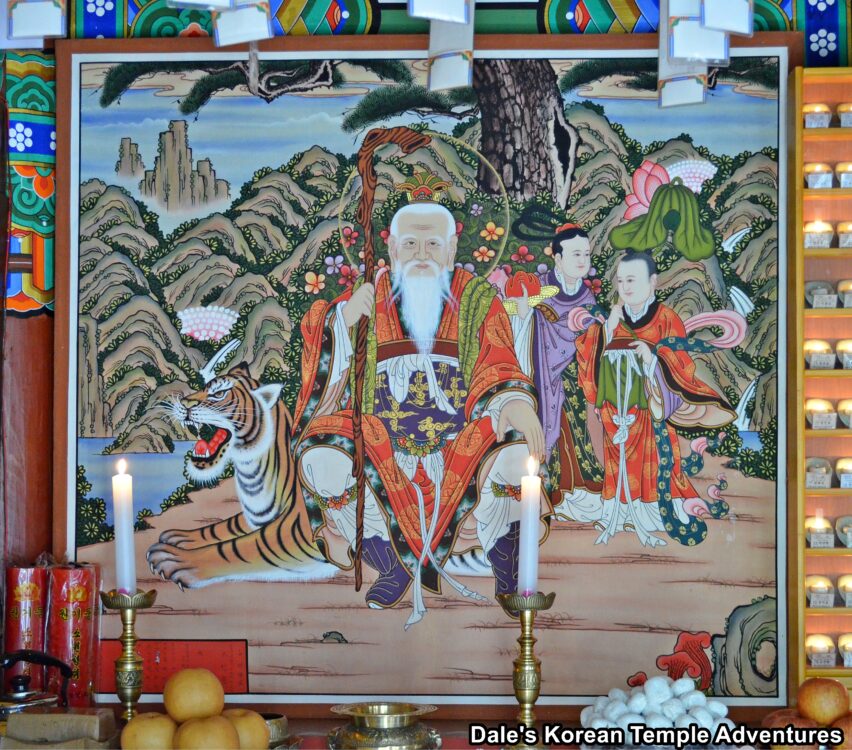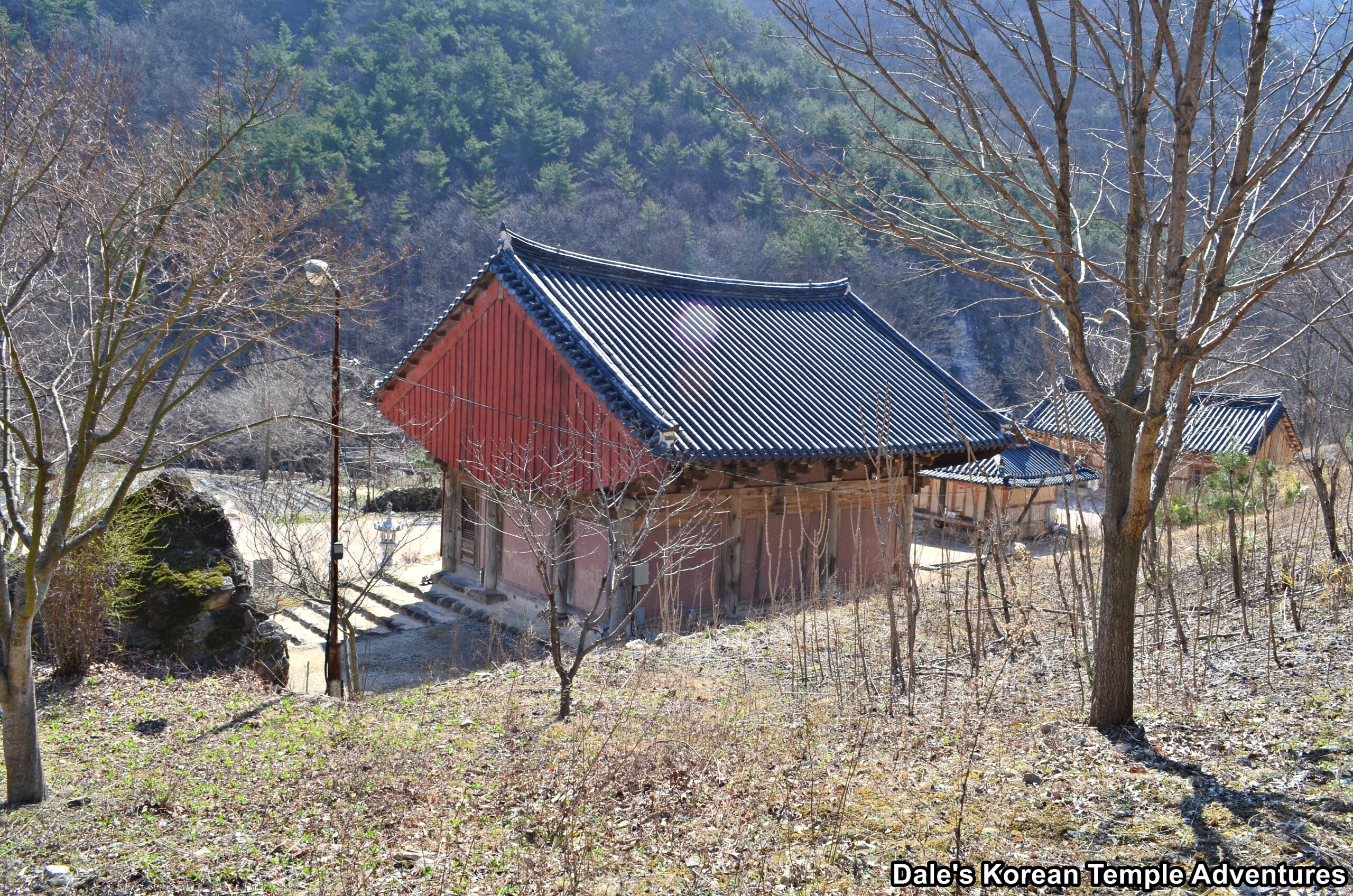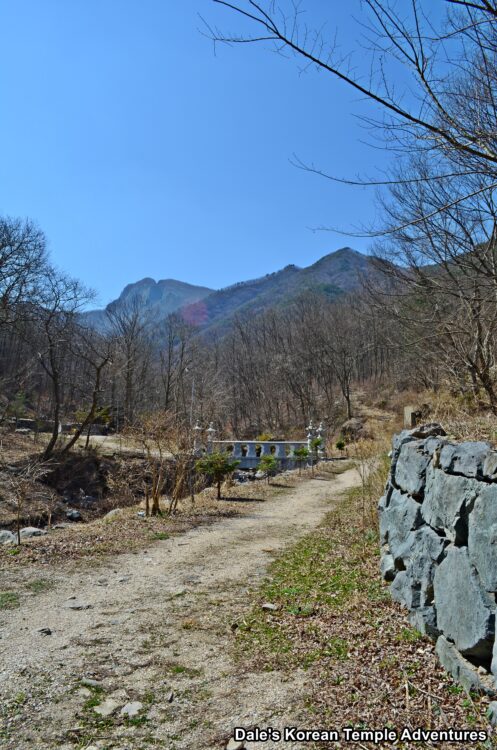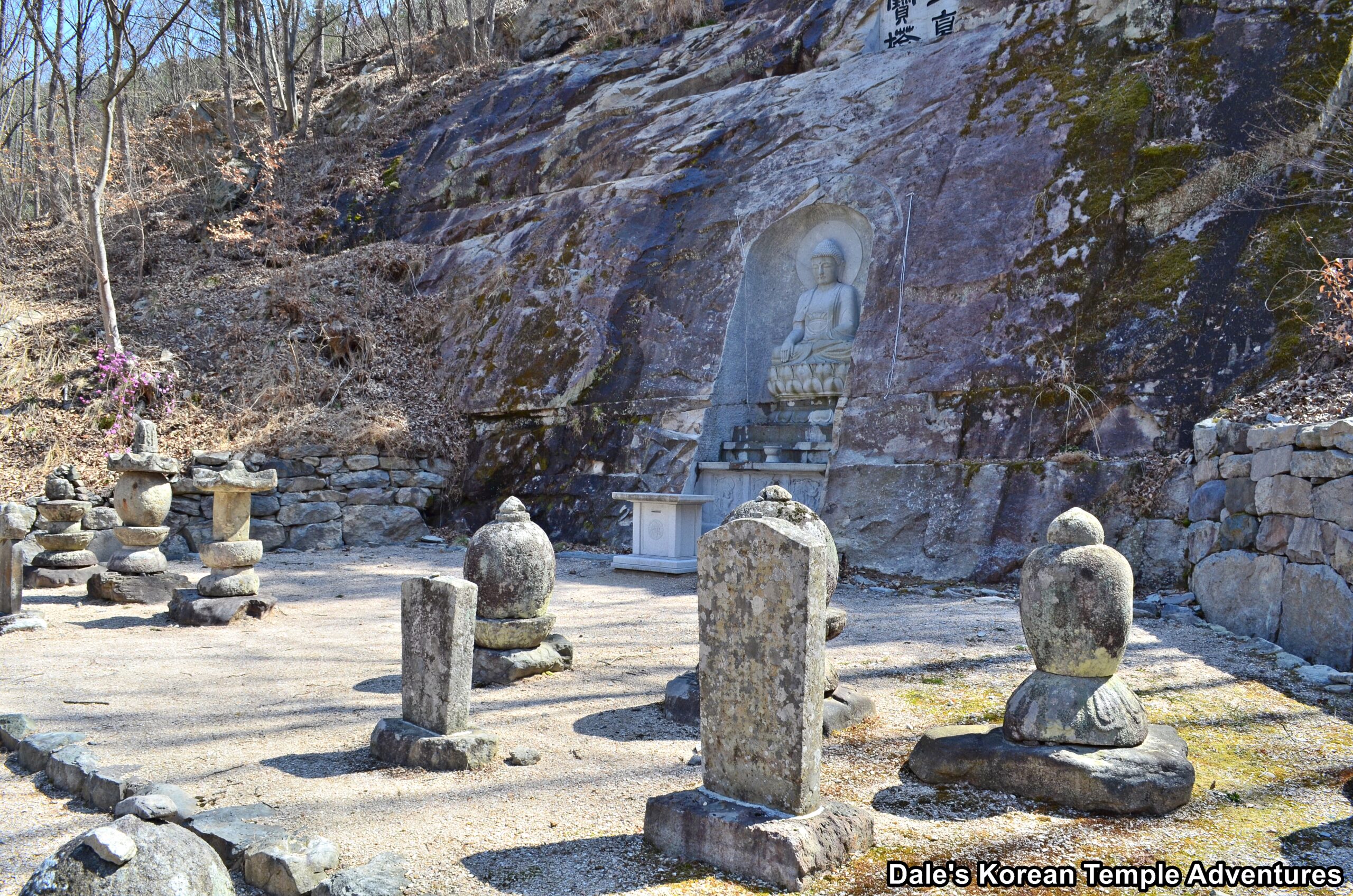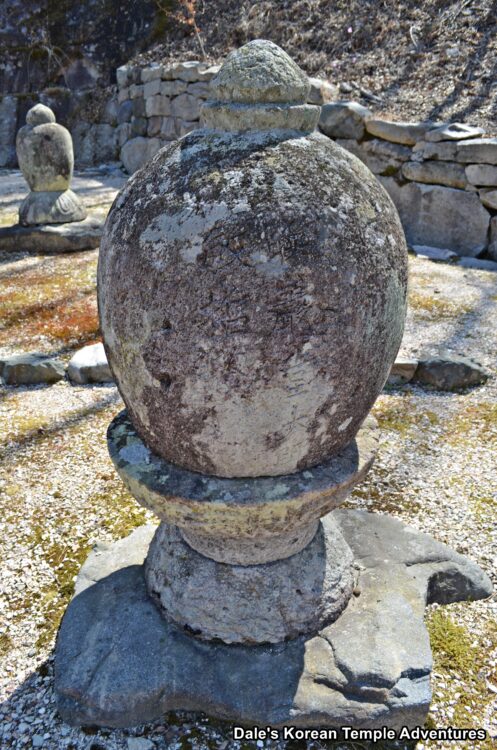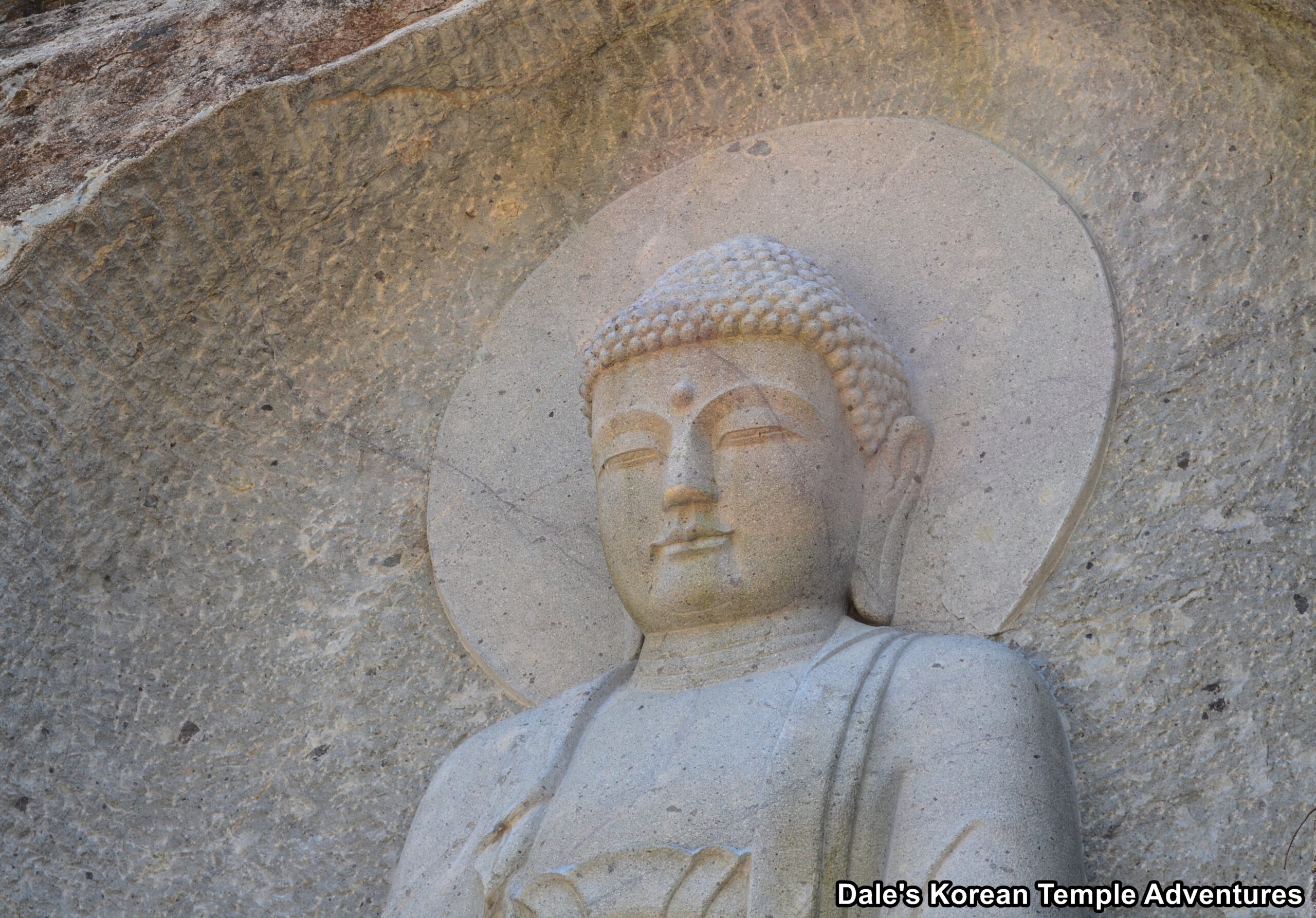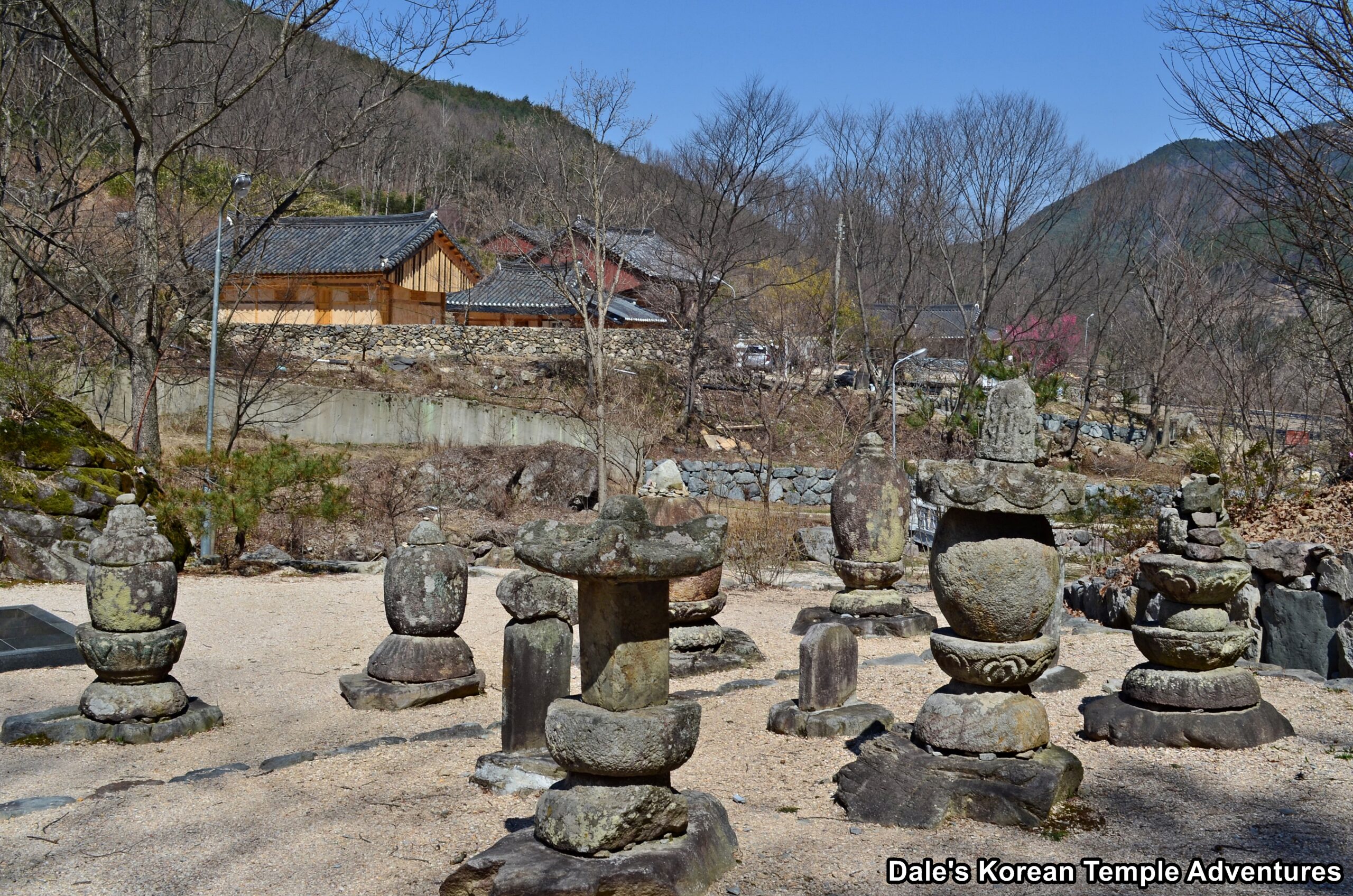Daebisa Temple – 대비사 (Cheongdo, Gyeongsangbuk-do)
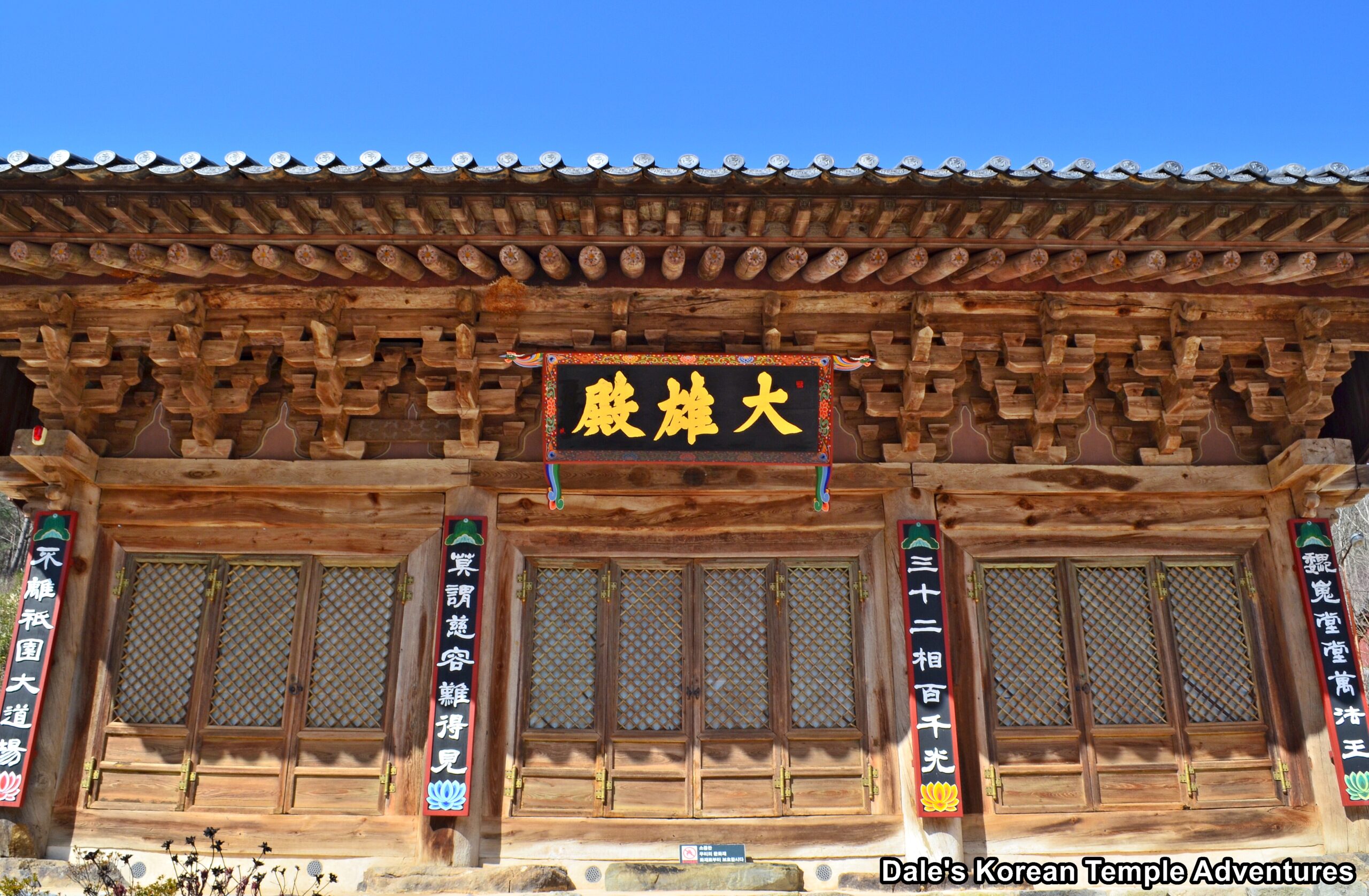
Temple History
Daebisa Temple is located in Cheongdo, Gyeongsangbuk-do. Daebisa Temple was first founded in 566 A.D. by the monk Sinseung. Originally, the temple was known as Sojakgapsa Temple. Later, the temple was expanded by the monk Wongwang-guksa (558-638 A.D.) in 600 A.D. It was at this time that the temple was renamed Daebigapsa Temple. As for the name change, it’s slightly unclear as to how it got its name. One theory is that the temple got its name from a Silla Kingdom (57 B.C. – 935 A.D.) queen. Supposedly the temple is named after this queen that stayed at the temple for an extended period of time.
Originally, Daebisa Temple was located more westerly in Bakgok-ri in Cheongdo. However, the temple was relocated to its current location during the Goryeo Dynasty (918-1392). Daebisa Temple is also located to the west of Unmunsa Temple and divided by a mountain ridge. This mountain ridge is a part of Mt. Unmunsan (1,188 m). Additionally, Daebisa Temple used to have two associated hermitages. However, Dosolam Hermitage and Okryeonam Hermitage are no longer in existence and Daebisa Temple is a much smaller temple than it once was.
Daebisa Temple is home to two Korean Treasures. The first is Korean Treasure #834, which is the Daeung-jeon Hall. And the other Korean Treasure is Korean Treasure #1957, which is The Assembly on Vulture Peak (Yeongsan Hoesangdo) of Daebisa Temple in Cheongdo.
Temple Layout
You first approach Daebisa Temple down a long and winding country road for about five kilometres. Nearing the end of the road, you’ll pass by the beautiful Daebi Reservoir. Finally nearing the outskirts of the temple grounds, you’ll find that the temple is surrounded by traditional tile fences. Climbing up the first set of uneven stairs, you’ll finally be welcomed by the first set of temple buildings at Daebisa Temple. To the right is the kitchen and to the left are the monks’ dorms.
Continuing to the left, the expansive temple courtyard finally becomes visible. The central building in the temple courtyard is the diminutive Daeung-jeon Hall, which also just so happens to be a Korean Treasure. Writing inside the hall indicates that it was repaired in 1685, so it’s presumed to have been built around the 16th century. The exterior walls are largely unadorned; however, in places, you can still see the fading remnants of the colourful dancheong. And out in front of the Daeung-jeon Hall, you’ll find a newly built, and rather broad, three-story stone pagoda that’s fronted by a pair of seokdeung (stone lanterns).
Stepping inside the Daeung-jeon Hall, you’ll find a triad of statues resting on the main altar. This triad is centred by Seokgamoni-bul (The Historical Buddha). This central image is joined on either side by Gwanseeum-bosal (The Bodhisattva of Compassion) and Jijang-bosal (The Bodhisattva of the Afterlife). Backing the main altar triad is a replica of The Assembly on Vulture Peak (Yeongsan Hoesangdo) of Daebisa Temple in Cheongdo. The original Korean Treasure, Korean Treasure #1957, was first painted in 1696. However, the painting was stolen from the temple on December 24th, 1988. It was finally recovered in August, 2014. Overall, the painting is in good condition. It’s believed to have been first painted to be used to hang on the wall behind the main altar inside the Daeung-jeon Hall at Daebisa Temple. From a piece of writing on the painting, it was learned that The Assembly on Vulture Peak (Yeongsan Hoesangdo) of Daebisa Temple in Cheongdo was created by four monks. They were Haeung, Uigyun, Hoseon, and Sangmyeong. Rounding out the rest of the interior of the Daeung-jeon Hall, and painted on the two pillars that support the backing wall of the main altar, are a pair of twisting dragons. The ceiling of the shrine hall are adorned with floral designs. And on the far left wall hangs a nice Shinjung Taenghwa (Guardian Mural).
Behind the Daeung-jeon Hall, and to the right, you’ll find the Samseong-gak Hall. The rugged set of stairs that lead up to the shaman shrine hall will bring you to a newer-looking Samseong-gak Hall. On the left exterior wall is a beautiful white crane mural. And on the right exterior wall is a painted image of a tiger. Stepping inside the Samseong-gak Hall, you’ll find a triad of shaman images. The painting in the centre is dedicated to Chilseong (The Seven Stars). And to the right is an image dedicated to Dokseong (The Lonely Saint), while to the left hangs an image dedicated to Sanshin (The Mountain Spirit). All three are expertly rendered and newer in composition.
To the far left of the Daeung-jeon Hall are another collection of temple buildings. These are off-limits to visitors. However, if you veer to your left and head down a trail, but before arriving at this sectioned off area, you’ll find a neighbouring stream. Over the bridge that’s adorned with stone Gwimyeon (Monster Masks), you’ll find a historic budowon. Here, there are numerous ancient stupas dedicated to monks that once called Daebisa Temple home. This is probably the greatest indication of just how old and important a temple Daebisa Temple once was. While smaller in size, the temple points to a much richer past. And backing this historic set of stupas is a newly sculpted stone relief dedicated to Seokgamoni-bul (The Historical Buddha).
How To Get There
Daebisa Temple is one of the trickier temples to get to in Korea. You first need to get to the Cheongdo Train Station. From the train station, you’ll need to make your way over to the Cheongdo Bus Station, which is conveniently located in front of the train station. At the bus station, you’ll need to catch the “Unmunsa haeng – 운문사 행” bus. You’ll then need to take this bus for an hour. You’ll then need to get off at Donggok in Geumcheon. Finally, you’ll either need to catch a local city bus to get to Daebisa Temple or you can take a taxi. Like I said, not the easiest temple to get to.
Overall Rating: 7/10
Daebisa Temple is one of the more remote temples that you’ll find in Korea. However, with some effort, you can find this beautiful temple. The main highlight, rather obviously, starts at the Daeung-jeon Hall. This historic main hall is beautiful both inside and out. Adding to the Daeung-jeon Hall is the newly built Samseong-gak Hall and its shaman murals, as well as the budowon with all of its historic stupas. The budowon at Daebisa Temple is one of the more impressive collections of historic stupas in Korea.
